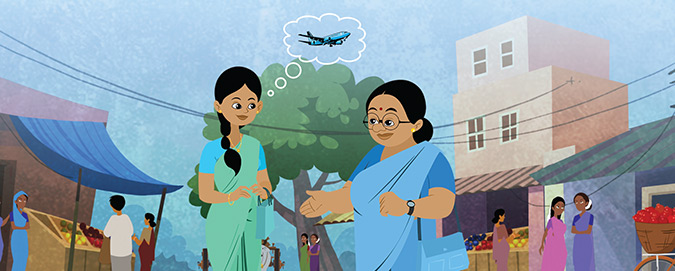Towards Safe Migration for Aspiring Women Domestic Workers

India is one of the largest countries of origin, transit and destination for international migrants[1]. A majority of Indian migrants in the Emigration Check Required[2] category go to the Gulf Cooperation Council countries[3]. Over the years, there has been an increasing trend of feminization of migration in the country, with women now accounting for 49 per cent of all migrants from India[4]. Within this framework, domestic work is the largest sector driving international female labour migration[5]. Migrant Women Domestic Workers face a range of concerns and are often at risk of exploitation, abuse and violence throughout the migration cycle, including human rights violations such as: sexual and gender-based violence, harassment and abuse; and unjust and exploitative working conditions.
Against this backdrop, between May 2016 and September 2017, UN Women in collaboration with the India Centre for Migration, Ministry of External Affairs, Government of India has developed IEC material aimed at Migrant Women Domestic Workers, comprising of a handbook, poster, audio and video spots and a destination helpline card. The material contains information on the rules and regulations and prerequisites for migration, the pre-departure preparation steps, important contact numbers, travel tips, information about destination countries, basic Arabic vocabulary and, most importantly, the rights of Migrant Women Domestic Workers.
The material was used and disseminated at two Trainings of Trainers held from 25-26 October 2017 in Sircilla, Telangana and from 27-28 November 2017 in Bommuru, Rajahmundry, Andhra Pradesh.
The overall objective of the TOT was to provide 48 Master Trainers from the states of Telangana and Andhra Pradesh with the capacity to conduct Pre-Departure Orientation Trainings targeted at 3,000 aspiring women migrant domestic workers. The PDOT sessions focus on the rights and responsibilities of aspiring migrant women domestic workers and on legal mechanisms for safe migration.
This migration project falls under the three-year programme "From Opportunities to Capacities: A Multi-Sectoral Approach to Enhancing Gender Responsive Governance" supported by the Royal Norwegian Embassy.
- United Nations, Department of Economic and Social Affairs, Population Division. 2016. International Migration Report 2015: Highlights (ST/ESA/SER.A/375). (p. 7). Accessed on 10 July 2017
- Ministry of External Affairs, Government of India. 2017. Emigration Abroad for Employment. (p.1). Accessed on 10 July 2017
- Ministry of External Affairs, Government of India. Ministry of External Affairs - Annual Report 2015-2016. (p. 210). Accessed on 10 July 2017
- United Nations, Department of Economic and Social Affairs, Population Division. 2016. International Migration Report 2015: Highlights (ST/ESA/SER.A/375). (p. 29). Accessed on 10 July 2017
- "…domestic work is one of the only occupations where legal migration of women workers has been recognized to be necessary in the Gulf States, as well as Malaysia, Singapore, Hong Kong and Taiwan. These countries receive thousands of women migrants for domestic work every year and their numbers are increasing in importance when compared to numbers of male migrants" - Moreno-Fontes Chammartin, Gloria. International Migration Programme, ILO. (no year).The feminisation of international migration. (p. 41). Accessed on 25 August 2017